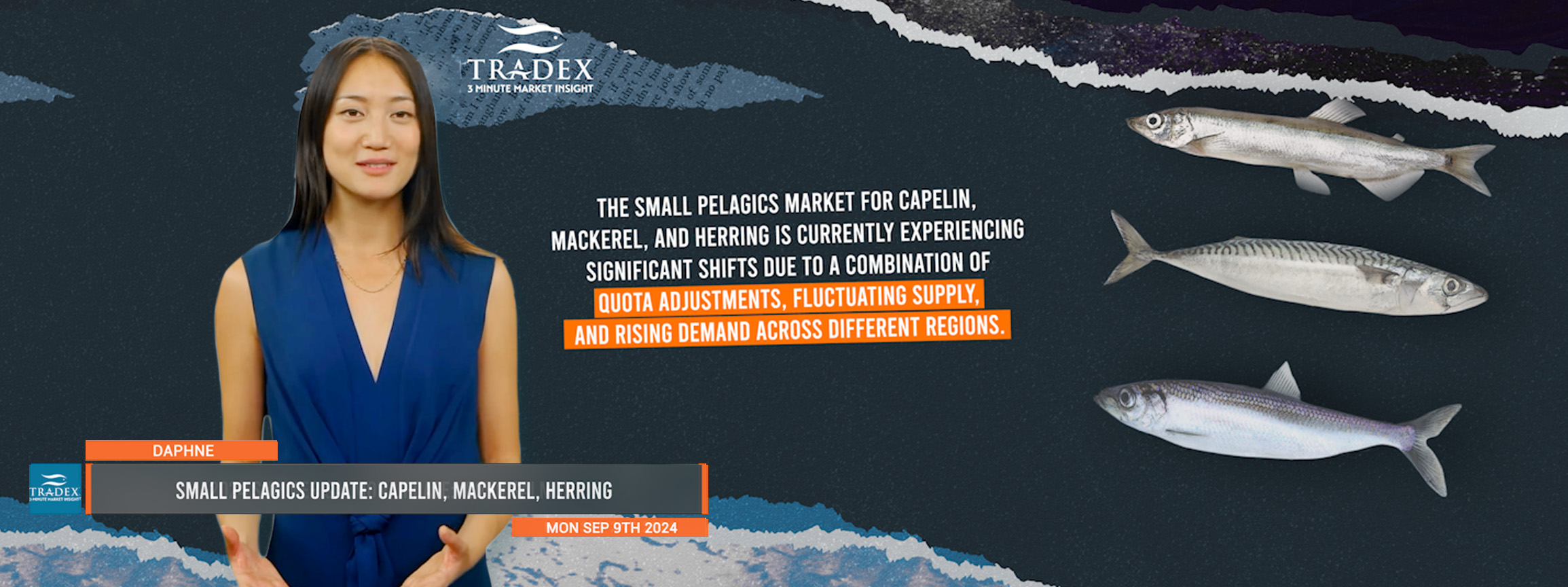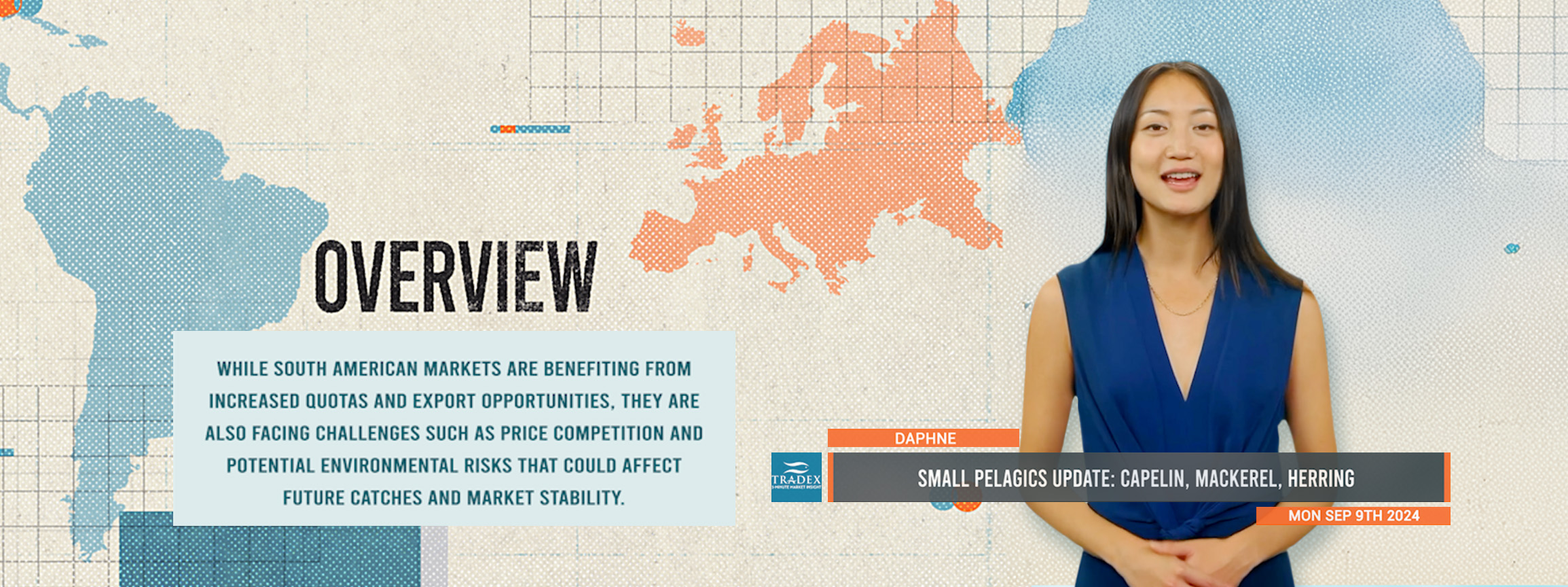
Loading
EP 707 | AIRED 09/09/2024
Small Pelagics Update: Capelin, Mackerel, Herring
September 9th, 2024 - The small pelagics market for Capelin, Mackerel, and Herring is currently experiencing significant shifts due to a combination of quota adjustments, fluctuating supply, and rising demand across different regions.
Capelin prices have reached record highs this year, driven primarily by closures and strong market demand. Iceland, traditionally one of the largest producers of capelin, did not open its fishery this year due to insufficient stock levels. This closure, coupled with ongoing strong demand, particularly from Japan and China, has led to soaring prices. The supply situation is tight, which continues to push prices upward.
Mackerel prices are also on the rise, primarily due to lower quotas and strong demand in key markets like Japan and South Korea. The Norwegian mackerel quota for this year was notably reduced, contributing to a 30% increase in prices from the previous year. Although some regions like Chile have seen increased quotas for Jack Mackerel, which might offer some relief, the overall market remains tight. European markets are seeing strong competition for supplies, and prices are expected to remain high.
Herring markets are somewhat more stable, although prices have been fluctuating. In Norway, despite a decrease in the herring quota, prices have shown only slight increases. However, the overall supply is under pressure due to various factors, including lower landings and high cold storage holdings. This stability might be short-lived if quotas continue to be adjusted downward or if demand increases in key markets like Germany and Russia.

European markets for Capelin, Mackerel, and Herring are struggling with reduced quotas and rising demand, leading to significant price increases. This is particularly affecting processing companies and pushing importers to seek cheaper alternatives like Jack Mackerel from South America. Consumers are also facing higher costs, with concerns about declining consumption. Brexit has added further disruption by increasing UK landings and altering trade with the EU. While increased cold storage of Herring offers temporary relief, ongoing quota cuts could worsen the situation.
South American markets, particularly in Chile and Peru, are experiencing mixed impacts. Chile has increased Jack Mackerel landings due to higher quotas, boosting exports to Europe where demand is high. However, this has intensified price competition, potentially reducing profit margins. Peru's anchovy fishery remains stable, but environmental concerns like El Niño could disrupt future catches. Domestically, growing demand for small pelagics in both countries helps offset some export market fluctuations.

Advertise Here: advertising@tradexfoods.com
Overall, European markets are grappling with higher prices, supply constraints, and potential shifts in consumer behavior due to the ongoing changes in the small pelagics market - while South American markets are benefiting from increased quotas and export opportunities, they are also facing challenges such as price competition and potential environmental risks that could affect future catches and market stability.

Our recommendation to seafood buyers is to keep an eye on environmental factors like El Niño, use cold storage to manage supply issues, stay prepared for price swings, and be flexible with trade changes to effectively handle the current market challenges - all while working with a reliable seafood partner like Tradex Foods.
--- If you are not already, be sure to subscribe to our Weekly Seafood News Update using the signup form below.


